Disclosure: This article contains affiliate links. We may earn a commission from purchases at no extra cost to you, which helps our travel content.
The first time I saw millions of bright red crustaceans painting an entire island crimson, I nearly dropped my DIY camera rig. As a skydiver, I'm used to adrenaline rushes, but witnessing Christmas Island's red crab migration left me breathless in an entirely different way. This remote Australian territory hosts what might be the planet's most visually stunning migration – when approximately 50 million crimson crabs march from forest to sea in a synchronized biological spectacle that transforms the entire landscape. After experiencing this natural wonder firsthand last November, I'm sharing my complete guide for couples seeking their own perfect migration adventure.
Planning Your Migration Timing: Nature's Unpredictable Calendar
Here's the fascinating challenge with the red crab migration: Mother Nature keeps her own calendar. The migration typically occurs between October and December, triggered by the first substantial rainfall of the wet season combined with lunar cycles. But pinpointing the exact week? That requires flexibility and a bit of luck.
During my trip planning, I obsessively checked the Christmas Island Tourism Association updates and joined several local Facebook groups where rangers post real-time migration forecasts. After three years of attempting to time this right (twice thwarted by pandemic travel restrictions), I finally booked a flexible 10-day window in early November, allowing myself room to adjust as the migration signals appeared.
The island's limited accommodation fills quickly during migration season. I stayed at the comfortable Virgin's Castle, booking six months in advance with a flexible cancellation policy. If you're planning your own migration adventure, I'd recommend a similar approach – book early, but with flexibility, and stay connected to local information sources that track rainfall patterns and crab movements.
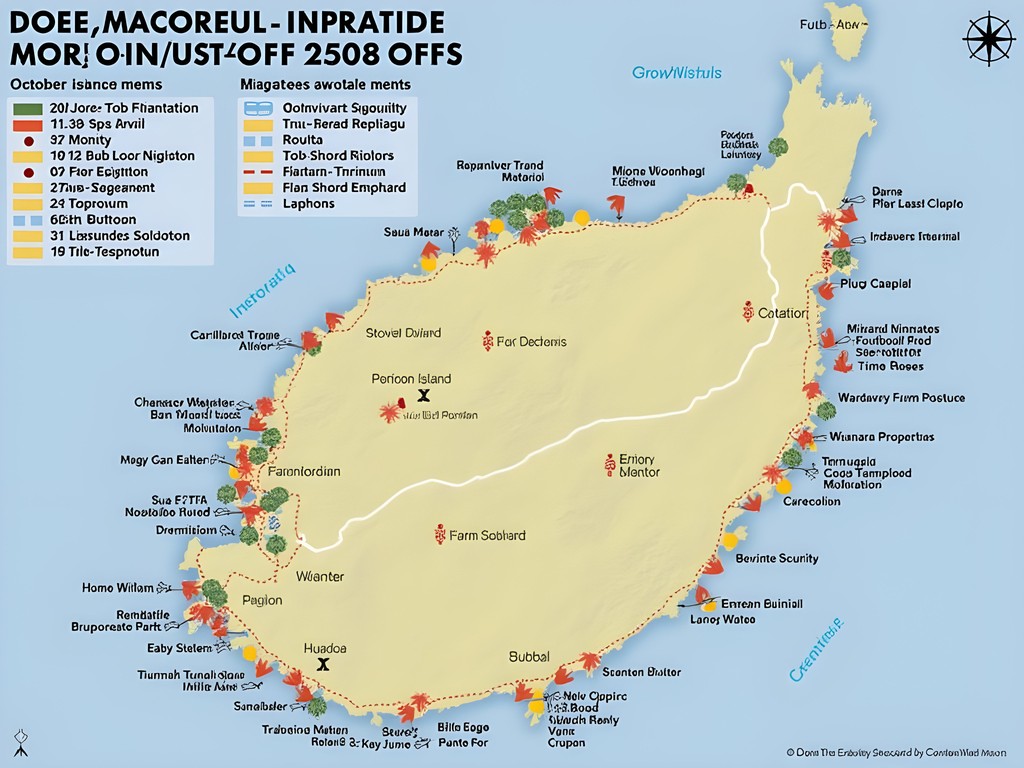
💡 Pro Tips
- Book accommodations at least 6 months in advance with flexible cancellation policies
- Join the Christmas Island Tourism Association Facebook group for real-time migration updates from rangers
- Plan a minimum 7-day visit to increase your chances of witnessing peak migration days
Crab Bridges and Road Closures: Navigating an Island Taken Over
Imagine driving on roads where wildlife literally has the right of way. During migration season, Christmas Island transforms its infrastructure to accommodate its crimson residents. Rangers close major roads during peak movement hours, and the island's famous 'crab bridges' – specially designed overpasses that help crabs safely cross roads – become bustling crab highways.
Renting a vehicle is essential for exploring the island, but be prepared for a unique driving experience. My waterproof hiking boots became my constant companions, as I often parked and continued on foot when roads closed. The island's temporary 'road closed' notifications work via WhatsApp groups that rangers update hourly – possibly the most unique traffic alert system I've encountered worldwide!
One morning, I joined a local ranger-guided tour that provided fascinating insights into migration biology and conservation efforts. The rangers carry specialized crab-safe brooms to gently guide crabs away from danger – a tool I wish I'd packed myself after nearly stepping on several crabs during nighttime walks back to my accommodation.
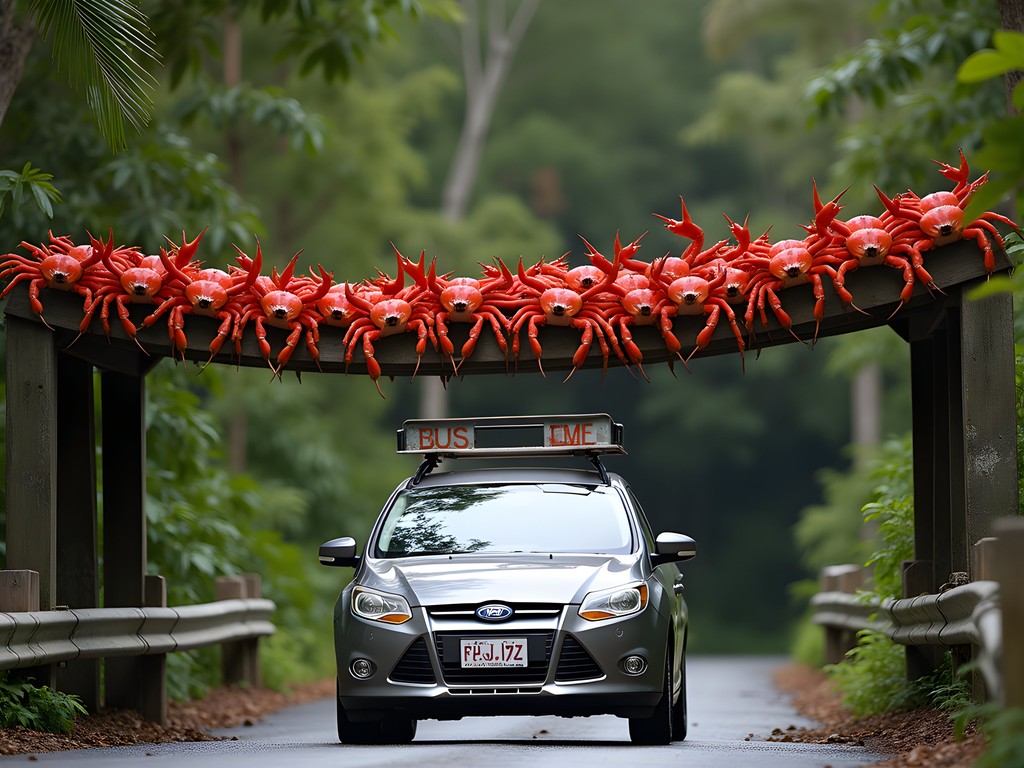
💡 Pro Tips
- Download offline maps before arrival as internet connectivity is limited
- Join the local WhatsApp groups upon arrival for real-time road closure updates
- Always carry a headlamp for nighttime walks when crabs are most active
Capturing the Crimson Wave: Photography Challenges
As someone who built her first camera stabilizer for skydiving videos, I thought I was prepared for any photography challenge. Christmas Island's red crab migration quickly humbled me. The contrast between vibrant red crabs and lush green jungle creates stunning visual opportunities but presents unique technical challenges.
The crabs move surprisingly quickly (especially males during the first migration wave), and their constant motion requires fast shutter speeds. I found myself constantly switching between wide landscape shots to capture the sheer scale of millions moving together, and macro details of their fascinating behaviors and interactions.
My waterproof camera backpack proved essential in the humid, often rainy conditions. I also relied heavily on my lens cleaning kit as the combination of salt spray near coastal areas and high humidity meant constantly battling foggy lenses.
One technical setup that worked brilliantly: mounting a flexible tripod low to the ground for eye-level time-lapse sequences of crabs marching past. This perspective transforms the experience, making viewers feel immersed in the migration rather than just observing from above.

💡 Pro Tips
- Bring twice as many memory cards as you think you'll need – you'll shoot thousands of photos
- Pack silica gel packets in your camera bag to combat the extreme humidity
- The best photography opportunities happen at dawn when crabs are most active but tourists are still sleeping
Beyond the Crabs: Christmas Island's Hidden Maker Culture
While the red crab migration rightfully steals the spotlight, my unexpected discovery was Christmas Island's fascinating multicultural maker community – a perfect blend of my two passions. The island's unique history as a phosphate mining center created a cultural melting pot of Chinese, Malay, and European influences, each bringing distinct craft traditions.
At the local weekend market, I discovered incredible handcrafted items incorporating crab motifs – from intricate batik fabrics to carved wooden sculptures. Local artisan Mei Lin taught me the basics of traditional Chinese paper cutting, creating delicate red crab silhouettes that now hang in my Belfast apartment.
For couples looking to deepen their migration experience, I highly recommend booking a workshop with the Christmas Island Arts & Culture group. My partner and I spent a fascinating afternoon learning to create crab-inspired block prints using traditional techniques and natural pigments derived from the island's minerals – a perfect rainy day activity when the crabs temporarily pause their march.
The island's small but innovative maker community has also developed unique solutions for sustainable tourism. I purchased a handcrafted reusable cutlery set made from reclaimed fishing nets and driftwood – both reducing waste and creating a perfect souvenir that reminds me of the island's conservation ethos every time I use it.

💡 Pro Tips
- Visit the weekend market at Settlement for unique handcrafted souvenirs
- Book cultural workshops at least 2 weeks in advance as they fill quickly during migration season
- Pack a lightweight, empty duffel bag for bringing home handcrafted souvenirs
Couples' Adventure Itinerary: Balancing Migration Viewing with Island Exploration
After chatting with numerous couples who felt they spent too much time only watching crabs, I developed what I call the '50/50 approach' to Christmas Island. Dedicate half your time to migration viewing and half to exploring the island's other natural wonders – this creates the perfect balance for couples with varying interests.
Mornings: Rise early (5:30am) to witness the most active crab movements before the day heats up. The Blowholes area and Greta Beach offer spectacular sunrise viewing with fewer tourists.
Afternoons: When migration activity typically slows, explore the island's other attractions. The Dales hiking trail leads to a stunning freshwater waterfall where you can cool off, while Flying Fish Cove offers excellent snorkeling among coral gardens teeming with tropical fish.
Evenings: Return to migration hotspots as activity increases again. The boardwalk near Lily Beach provides front-row seats to females releasing eggs into the ocean – a truly magical experience when timed with the full moon.
For romantic evenings, pack a portable wine and cheese picnic set for sunset migration viewing. We enjoyed spectacular evenings at Martin Point lookout, sharing wine and local cheeses while watching waves of crabs move through the golden hour light – moments that became highlights of our trip.
Don't miss booking the island's famous spa treatments that incorporate local clay with red crab imagery – the perfect way to relax after days of exploration. My partner still talks about the 'Red Migration Massage' that used warming techniques inspired by the crabs' journey.
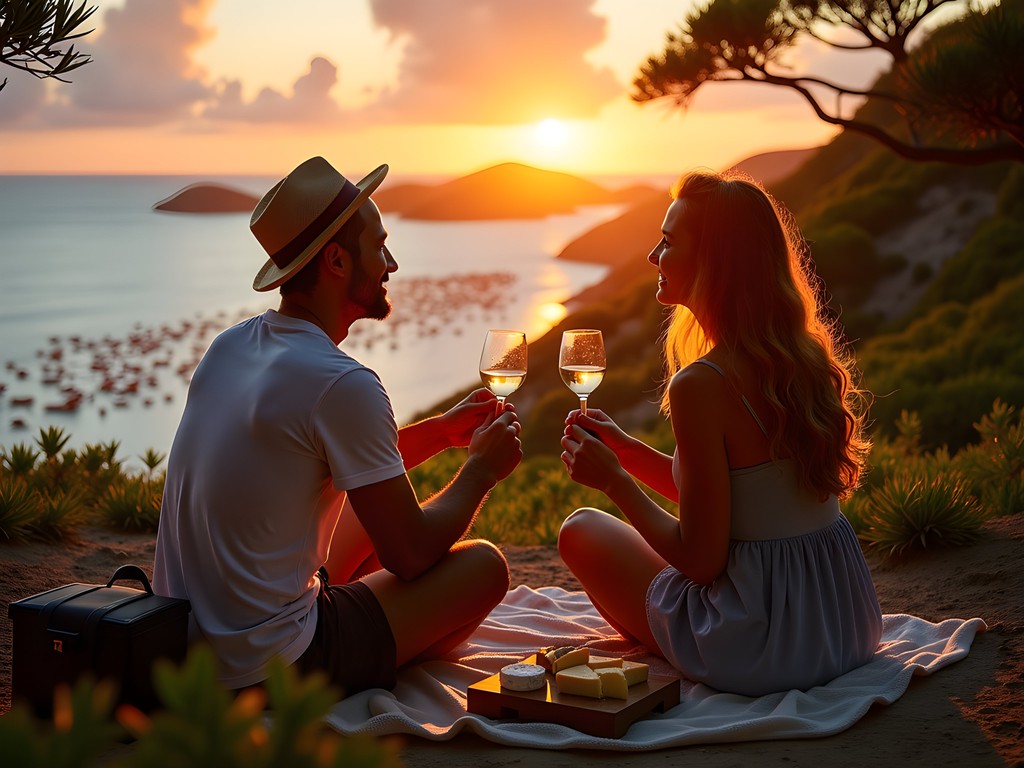
💡 Pro Tips
- Book the Flying Fish Cove snorkeling tour on day 3 or 4 when you need a break from crab viewing
- Request a private sunset viewing spot through your accommodation – many have secret locations away from crowds
- The Sunset Bar at VQ3 Lodge offers the best cocktails with perfect views of evening crab movements
Final Thoughts
As I watched the final female crabs release their precious eggs into the moonlit Indian Ocean, completing their remarkable journey, I understood why David Attenborough called this migration one of nature's greatest wonders. Christmas Island offers more than just a wildlife spectacle – it's a masterclass in adaptation, determination, and the breathtaking choreography of nature.
For couples seeking a shared adventure that combines romance with genuine wonder, this remote Australian territory delivers an experience unlike any other. The challenges of timing your visit perfectly and navigating an island temporarily ruled by crustaceans only enhance the reward when you find yourself surrounded by millions of crimson travelers on their ancient journey.
Whether you're capturing the perfect migration time-lapse, learning traditional crab-inspired crafts from local artisans, or simply enjoying a sunset picnic while waves of red wash across the landscape below, Christmas Island offers a rare chance to witness one of our planet's most spectacular biological events – together. Pack your sense of adventure (and those waterproof hiking boots!), embrace the unpredictability, and prepare for a journey that will transform how you see the natural world and its remarkable resilience.
✨ Key Takeaways
- Book flexible dates between October-December to maximize your chances of witnessing peak migration
- Balance crab viewing with other island activities for the perfect couples' experience
- Support local conservation efforts and makers creating sustainable crab-inspired crafts
- Early morning and sunset offer the best viewing opportunities with fewer crowds
📋 Practical Information
Best Time to Visit
October to December (wet season beginning)
Budget Estimate
$2,500-3,500 per person for a 7-day trip including flights from mainland Australia
Recommended Duration
7-10 days
Difficulty Level
Moderate
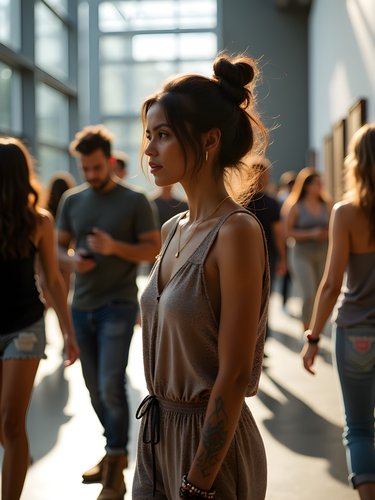
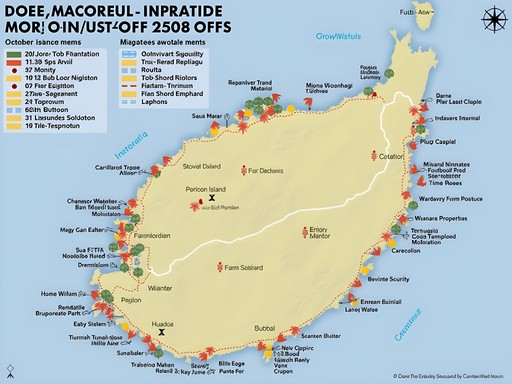














Comments
beachchamp
Are there any tours you'd recommend? Or is it better to explore independently?
luckytime
We did a mix of both! Hired a local guide for one day to learn about the migration, then explored on our own the rest of the time. Definitely worth getting a guide at least once.
happymaster
Just added this to my bucket list! Those red crabs against the green jungle 😍
Haley Hamilton
Astrid, you've captured the magic perfectly! I backpacked there in 2023 and was completely mesmerized. For anyone planning to go: the locals are incredibly knowledgeable and helpful. I stayed at a small guesthouse where the owner would update us daily on migration patterns. One tip I didn't see mentioned - bring proper rain gear! When I went, we had unexpected downpours that actually triggered more intense crab movement. Those moments in the rain with fewer tourists around were my most magical. Also, the 'maker culture' Astrid mentions is real - I took a workshop with a local artist who creates stunning pieces inspired by the migration. Don't miss that side of the island!
starhero
Which guesthouse did you stay at? Looking to book something for next year!
Haley Hamilton
I stayed at Island Breeze Guesthouse - family run and they serve amazing local food too!
vacationwanderer
Is it worth bringing professional camera gear or will a good smartphone be enough? Trying to pack light!
Riley Griffin
I brought my DSLR when we went as a family, but honestly got some of my best shots on my phone! The crabs are so vibrant they look amazing even on a smartphone. Just make sure you have something waterproof for those ocean release shots - we used a waterproof phone case for our phones and it worked perfectly.
luckytime
I was lucky enough to see this last year! The unpredictability was real - we almost missed it but extended our stay at the last minute. Those crab bridges are genius, though we still had to stop the car multiple times to let the little guys cross. Worth every minute of waiting!
happymaster
How many days would you recommend staying to make sure you catch it?
luckytime
We did 10 days to be safe. The locals can give you updates on timing once you're there!
starhero
Those photos are INSANE! Never seen anything like this before!
sunnyhero
Wow, this is definitely going on my bucket list! Never even heard of this before!
Amit Sullivan
Astrid, your mention of the 'hidden maker culture' resonated deeply with me. During my visit last year, I spent a rainy afternoon learning traditional batik techniques from a Chinese-Malay family who've lived on Christmas Island for four generations. Their patterns incorporated the red crabs in such beautiful ways. The island's multicultural heritage (Malay, Chinese, European) creates this fascinating fusion of traditions that most tourists miss because they're so focused on the crabs. Don't get me wrong - the migration is spectacular - but the human story of this remote outpost is equally compelling. I'd recommend spending at least 7 days to experience both the natural wonder and the cultural richness. The Flying Fish Cove night market (Wednesdays during migration season) showcases this beautifully.
Astrid Williams
Amit, you're absolutely right about the cultural richness! I'm actually planning a follow-up piece specifically about the island's multicultural heritage. That batik workshop sounds incredible - would love to hear more about it if you're willing to share details.
winterexplorer
Those crab bridges are so cool! Nature and engineering working together.
happyexplorer
Just got back from Christmas Island last month and timed it perfectly! The migration was in full swing and it was mind-blowing. Those crab bridges are engineering marvels - we spent hours just watching the crabs use them. One thing Astrid didn't mention is how surprisingly emotional the experience is. There's something profound about witnessing millions of creatures following ancient instincts. I used my waterproof camera to get some amazing shots in the rain (it pours suddenly there). Make sure to join the official Christmas Island Crab Migration Facebook group - the locals post daily updates on crab movements which helped us plan each day.
sunnyguide
Thanks for the Facebook group tip! Just joined it.
Venture X
Premium card with 2X miles, $300 travel credit, Priority Pass